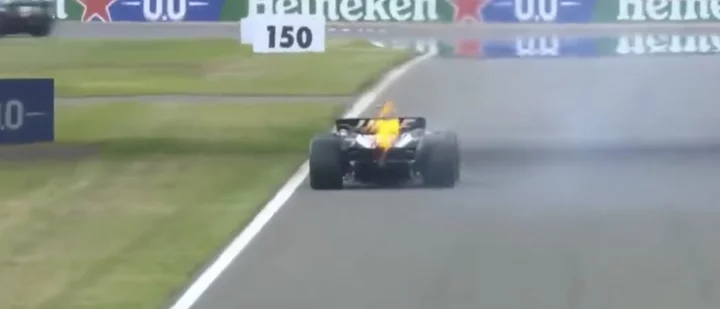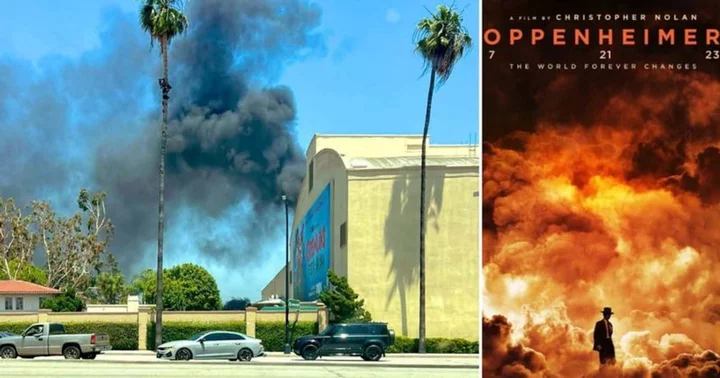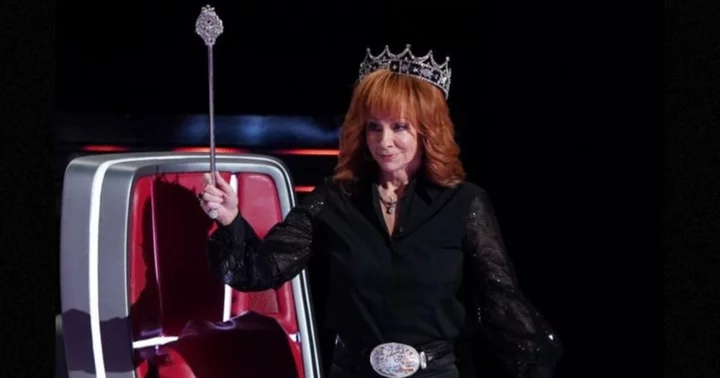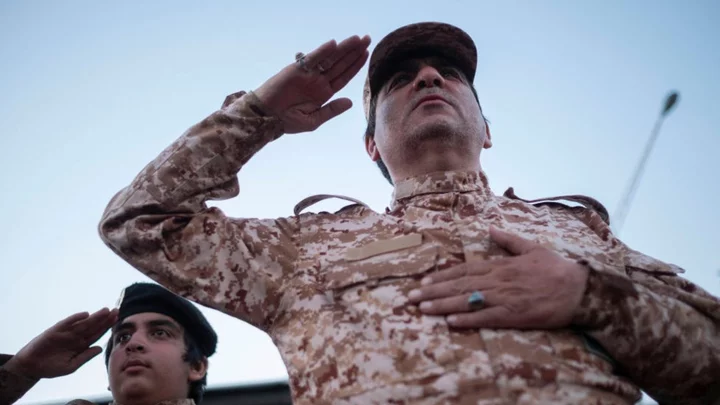Walking with the stars: Inside the white lines of the Las Vegas Grand Prix grid
It’s Saturday night in Sin City, 9pm local time. One hour until lights out. Walking out of the media centre, across the car park of the Tuscany Suites and Casino, and up through the various security checkpoints, you arrive at the highly coveted, yet strangely downplayed open space that is the Formula One paddock. Halfway down, between the garages of Aston Martin and Alfa Romeo, lies the grid access lane: a portal to the forthcoming chaos. There is a chill in the air. A cool 15C temperature which, predicted all week, is about to play havoc with tyres in the 50 laps ahead. A pause for breath and then the steel-faced American bodyguard gives the go-ahead. On you stroll, pretending you belong here. Welcome to the curiously flummoxing experience that is the F1 pre-race grid. And this is not any old grid. This is Las Vegas: F1’s newest super-venue, where no multimillion-dollar expense has been spared (save a manhole cover or two). In the near distance are 20 cars all lined up in order, with at least a dozen mechanics and engineers per car. And in the gaps in between stand everyone else – the VIPs, the executives and the media – relishing or reeling in the madness of it all. Forty minutes until lights out. Effectively, there are two choices as a grid bystander: stay at the front of the pack, scrummaged in the melee to catch a glimpse of the A-listers, or head speedily to the back of the start-finish straight to rise up for air. Your route? By any means necessary. Down the middle, tiptoeing down the sides, most likely a zigzagging of both. Aston Martin owner Lawrence Stroll trots down alongside his wife to the back, where his son Lance starts in 19th. He exchanges a joke with Sky Sports grid walk pioneer Martin Brundle: “Don’t bother me today!” he says. Brundle, sporting a striking dark blue jacket for Vegas’s F1 reincarnation, laughs as he awaits his cue from a producer in his ear. This is his terrain. He may well hate this, but Brundle is now best known for his memorable grid walk encounters as opposed to his 15-year racing career. It started in 1997, when ITV first gained the rights from the BBC for F1 in the UK and executive producer Neil Duncanson first floated the idea. Before that, attempts to encapsulate the pre-race frivolities for audiences at home were caught up in old-school F1 management red tape. Yet as Bernie Ecclestone took the sport into the 21st century so the broadcasting access expanded – and Martin’s grid walk era was born. He was said to be reluctant at first. Now it is his unorthodox home away from home. A plethora of TV companies have followed suit. Today, we’ll let Martin and the rest of them get on with it. It is a striking juxtaposition to the grid: while the pressure is high on broadcasters to keep viewers entertained with minute-by-minute soundbites, the written media can stand back and absorb this whole… thing. Whatever this is. Milling around, with no real purpose other than the process of milling around. Looking at the grandstands to the side, where ticket-holding F1 fans record and capture every moment, and you think to yourself in the real, morally just world, they’re probably more deserving of this spot than you. Nonetheless, on you go. Engineers sit in the cockpit, toying with the complex intricacies of these 220mph machines, revving the engines so brashly it is hard to hear yourself speak. It is a baffling mish-mash of car-staring, celebrity-glancing and photograph-taking. “Portrait or landscape?” I ask one VIP couple, who request a photo in front of Daniel Ricciardo’s AlphaTauri. “Let’s do both,” comes the response. Those “very important people” are identified by a pink pass dangling around their neck. But the real celebs are simply identifiable by the hordes of people around them, people desperate for that picture which will deliver hundreds upon thousands of likes on Instagram. They come in all shapes and sizes: DJ Steve Aoki, model Paris Hilton, LIV rebel golfer Ian Poulter. And, towering menacingly over them all, seven-foot-plus NBA icon Shaquille O’Neal. Fifteen minutes until lights out. Stumbling towards the front, a gap opens up around the outside of Charles Leclerc’s pole-sitting Ferrari, before it’s blocked off again. Instead, head down, you attempt to carve your own racing line through the chaos down the middle and bang: you’re in the shot of Brundle’s conversation with one star or another. Quick, act natural: hurry on through. As is procedure, the home national anthem of the “The Star-Spangled Banner” rings out. A loud horn then blares indicating a quickening of proceedings. Walking back into midfield again, you saunter past FIFA president Gianni Infantino. Is there any occasion he does not miss? Today I feel… Formula One. Bumping into recent interviewee Willy T Ribbs – “howdy partner” – is the last brief interaction. Any conversation on the grid is usually short-lived but now, 10 minutes until lights out, time’s up. FIA personnel rush the lot of you away, herding the cattle to the exit door. The process now is a delicate balancing act: walk slowly enough to take in every last second yet quick enough to avoid an ear-clipping from the racing bouncers. Mechanics frantically push tyre trolleys through the crowds back to the garages; one Williams staffer swears under his breath. Las Vegas 2023 is a far cry from the tranquillity of yesteryear at Budapest and Spa-Francorchamps. Eventually the grid is cleared and, quick as a flash, it's over. You can breathe. The drivers can breathe. Brief respite before the action out on track. Sharing the spotlight with the stars of yesterday and tomorrow is entertaining. A privilege. A taste of a different world, even if it is as a supporting act loitering in the background. Now though, the food chain is restored. The unparalleled uniqueness and flashiness of the F1 grid is perhaps unmatched in world sport. For half an hour you walk with the stars, real and fake, and then return to normality. But after a build-up saturated in speed and splendour, lights out is finally imminent. You’ve had your time: back to the laptop and coffee machine you go. Read More Christian Horner suggests Las Vegas Grand Prix solution to ‘brutal’ schedule Las Vegas Grand Prix dazzles on debut with usual dose of Max Verstappen reality How Formula 1 cracked America Christian Horner suggests Las Vegas Grand Prix solution to ‘brutal’ schedule ‘It happens’: F1 fail to apologise or issue refunds to Las Vegas fans F1 2023 official calendar: All 23 Grand Prix this year
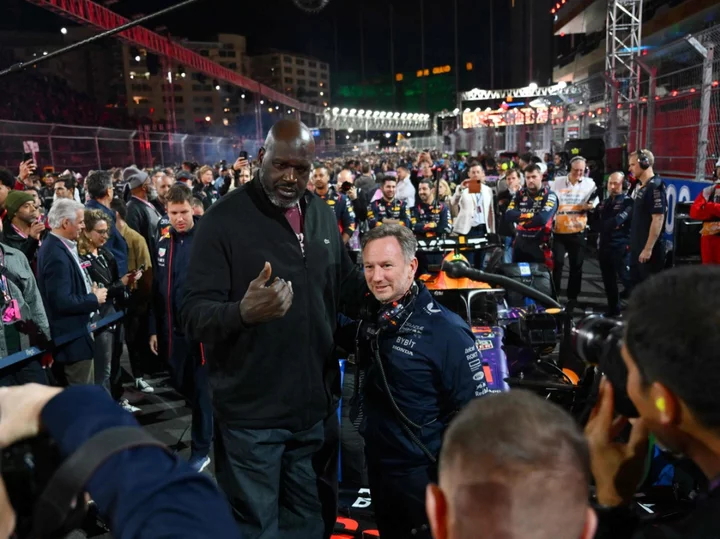
It’s Saturday night in Sin City, 9pm local time. One hour until lights out. Walking out of the media centre, across the car park of the Tuscany Suites and Casino, and up through the various security checkpoints, you arrive at the highly coveted, yet strangely downplayed open space that is the Formula One paddock. Halfway down, between the garages of Aston Martin and Alfa Romeo, lies the grid access lane: a portal to the forthcoming chaos.
There is a chill in the air. A cool 15C temperature which, predicted all week, is about to play havoc with tyres in the 50 laps ahead. A pause for breath and then the steel-faced American bodyguard gives the go-ahead. On you stroll, pretending you belong here. Welcome to the curiously flummoxing experience that is the F1 pre-race grid.
And this is not any old grid. This is Las Vegas: F1’s newest super-venue, where no multimillion-dollar expense has been spared (save a manhole cover or two). In the near distance are 20 cars all lined up in order, with at least a dozen mechanics and engineers per car. And in the gaps in between stand everyone else – the VIPs, the executives and the media – relishing or reeling in the madness of it all. Forty minutes until lights out.
Effectively, there are two choices as a grid bystander: stay at the front of the pack, scrummaged in the melee to catch a glimpse of the A-listers, or head speedily to the back of the start-finish straight to rise up for air. Your route? By any means necessary. Down the middle, tiptoeing down the sides, most likely a zigzagging of both. Aston Martin owner Lawrence Stroll trots down alongside his wife to the back, where his son Lance starts in 19th. He exchanges a joke with Sky Sports grid walk pioneer Martin Brundle: “Don’t bother me today!” he says. Brundle, sporting a striking dark blue jacket for Vegas’s F1 reincarnation, laughs as he awaits his cue from a producer in his ear. This is his terrain.
He may well hate this, but Brundle is now best known for his memorable grid walk encounters as opposed to his 15-year racing career. It started in 1997, when ITV first gained the rights from the BBC for F1 in the UK and executive producer Neil Duncanson first floated the idea. Before that, attempts to encapsulate the pre-race frivolities for audiences at home were caught up in old-school F1 management red tape.
Yet as Bernie Ecclestone took the sport into the 21st century so the broadcasting access expanded – and Martin’s grid walk era was born. He was said to be reluctant at first. Now it is his unorthodox home away from home.
A plethora of TV companies have followed suit. Today, we’ll let Martin and the rest of them get on with it. It is a striking juxtaposition to the grid: while the pressure is high on broadcasters to keep viewers entertained with minute-by-minute soundbites, the written media can stand back and absorb this whole… thing. Whatever this is. Milling around, with no real purpose other than the process of milling around. Looking at the grandstands to the side, where ticket-holding F1 fans record and capture every moment, and you think to yourself in the real, morally just world, they’re probably more deserving of this spot than you.
Nonetheless, on you go. Engineers sit in the cockpit, toying with the complex intricacies of these 220mph machines, revving the engines so brashly it is hard to hear yourself speak. It is a baffling mish-mash of car-staring, celebrity-glancing and photograph-taking. “Portrait or landscape?” I ask one VIP couple, who request a photo in front of Daniel Ricciardo’s AlphaTauri. “Let’s do both,” comes the response.
Those “very important people” are identified by a pink pass dangling around their neck. But the real celebs are simply identifiable by the hordes of people around them, people desperate for that picture which will deliver hundreds upon thousands of likes on Instagram. They come in all shapes and sizes: DJ Steve Aoki, model Paris Hilton, LIV rebel golfer Ian Poulter. And, towering menacingly over them all, seven-foot-plus NBA icon Shaquille O’Neal.
Fifteen minutes until lights out. Stumbling towards the front, a gap opens up around the outside of Charles Leclerc’s pole-sitting Ferrari, before it’s blocked off again. Instead, head down, you attempt to carve your own racing line through the chaos down the middle and bang: you’re in the shot of Brundle’s conversation with one star or another. Quick, act natural: hurry on through.
As is procedure, the home national anthem of the “The Star-Spangled Banner” rings out. A loud horn then blares indicating a quickening of proceedings. Walking back into midfield again, you saunter past FIFA president Gianni Infantino. Is there any occasion he does not miss? Today I feel… Formula One.
Bumping into recent interviewee Willy T Ribbs – “howdy partner” – is the last brief interaction. Any conversation on the grid is usually short-lived but now, 10 minutes until lights out, time’s up. FIA personnel rush the lot of you away, herding the cattle to the exit door. The process now is a delicate balancing act: walk slowly enough to take in every last second yet quick enough to avoid an ear-clipping from the racing bouncers.
Mechanics frantically push tyre trolleys through the crowds back to the garages; one Williams staffer swears under his breath. Las Vegas 2023 is a far cry from the tranquillity of yesteryear at Budapest and Spa-Francorchamps. Eventually the grid is cleared and, quick as a flash, it's over. You can breathe. The drivers can breathe. Brief respite before the action out on track.
Sharing the spotlight with the stars of yesterday and tomorrow is entertaining. A privilege. A taste of a different world, even if it is as a supporting act loitering in the background. Now though, the food chain is restored.
The unparalleled uniqueness and flashiness of the F1 grid is perhaps unmatched in world sport. For half an hour you walk with the stars, real and fake, and then return to normality. But after a build-up saturated in speed and splendour, lights out is finally imminent. You’ve had your time: back to the laptop and coffee machine you go.
Read More
Christian Horner suggests Las Vegas Grand Prix solution to ‘brutal’ schedule
Las Vegas Grand Prix dazzles on debut with usual dose of Max Verstappen reality
How Formula 1 cracked America
Christian Horner suggests Las Vegas Grand Prix solution to ‘brutal’ schedule
‘It happens’: F1 fail to apologise or issue refunds to Las Vegas fans
F1 2023 official calendar: All 23 Grand Prix this year


